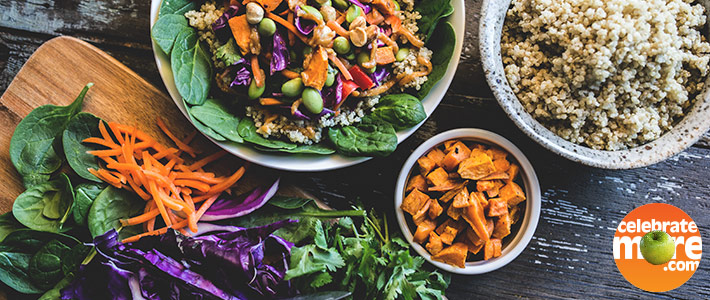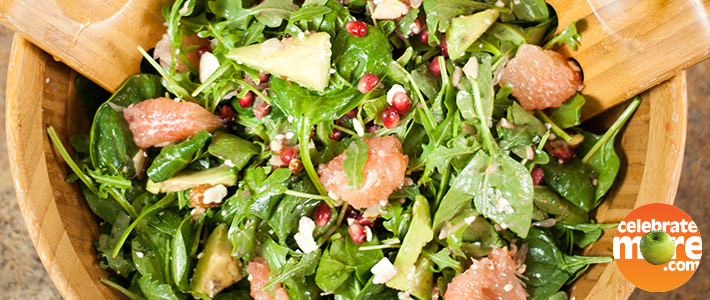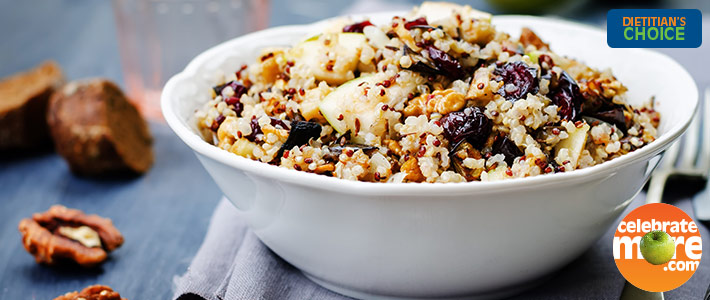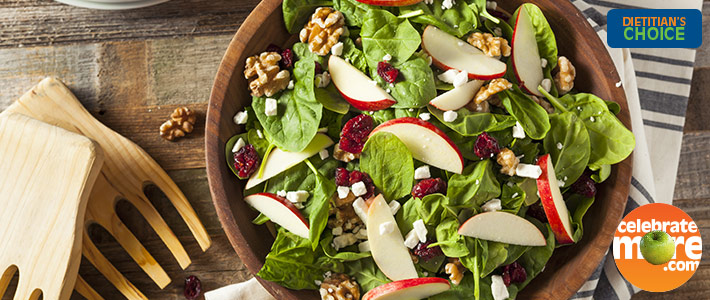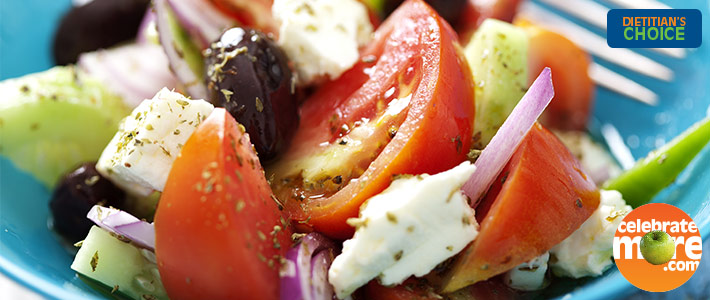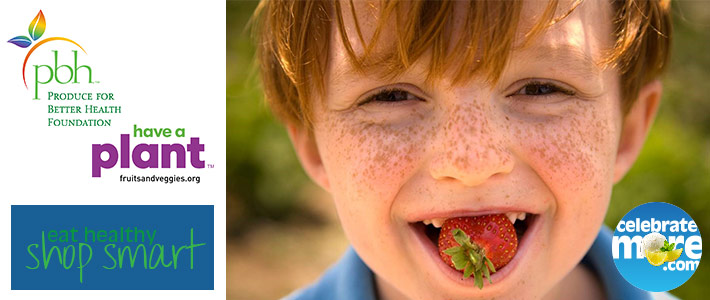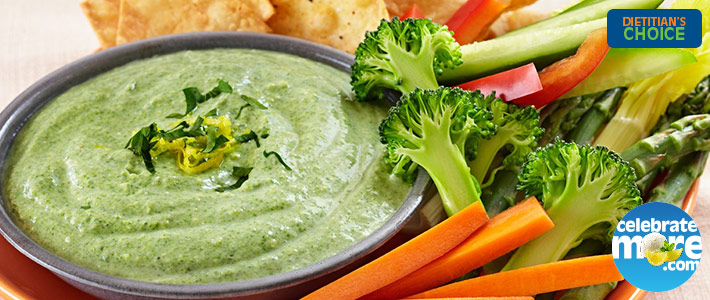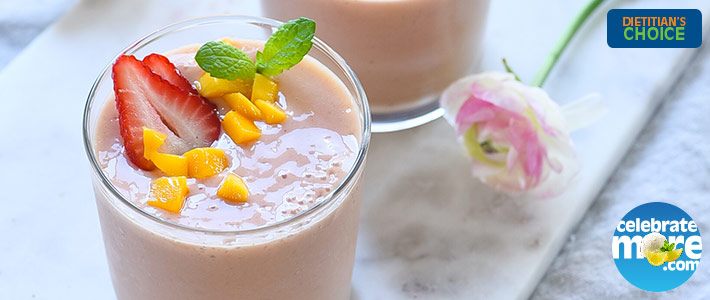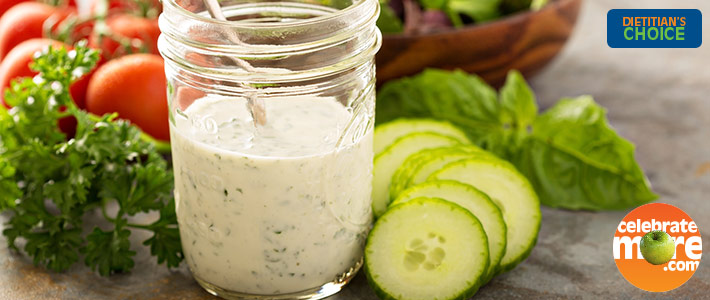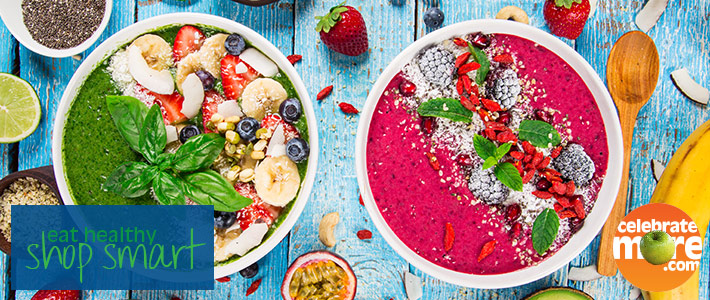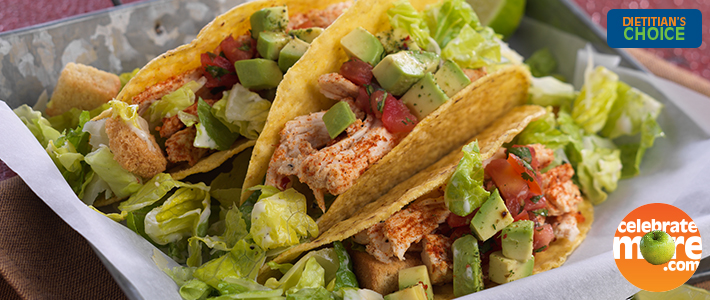
Tags: Dietitian’s Choice
Food Trends 2020
Happy New Year!! We are so grateful for all of our guests and the opportunities that our team of Registered Dietitians have had to share our passion for health & wellness with you and your families. We look forward to another great year in 2020!
 Meet Our Dietitians
Meet Our Dietitians
For those of you who don’t know us, we are Amy & Emily. Both Registered Dietitians who love to share recipes and resources to make healthy eating simple and delicious. We’re here to inspire you and help you fall back in love with food in a healthful way. To stay up-to-date with our latest articles, recipes, and resources, be sure to check back often to CelebrateMore.com/dietitians.
Food Trends 2020
As we gear up for 2020, our team of dietitians want to share what we believe are going to be some strong health and wellness trends when it comes to food for the New Year. The three big trends include food transparency (with a big focus on local products), plant-based foods, and functional foods and beverages (think gut health!).
>> Food Transparency (Local)
Consumers are continuing to look for more information on the shelf-tag and on the product that help them know what’s in their food (and what’s not) as well as where it was sourced. Labels such as “Natural” and “Organic” will be sought-after by consumers, and in 2020, we believe we will see an increase in consumers who are looking for “Local”. Here in the Midwest, we are proud to carry local products including produce, grains, meat, poultry, and even snacks. Although all local produce isn’t available all year round (thanks to our cold winters), we still have a variety of items supporting our local farmers.
>> Plant-Based Foods
We’ve seen an increase in popularity of plant-based foods and the trend will only gain traction as we settle into 2020. Plant-based foods (especially produce items) can help consumers meet their daily goal of fruits and vegetables. In addition to produce, consumers are looking for more plant-based sources of protein, as well. There are many great options out there, including whole grains (such as quinoa, wild rice, etc.), edamame, and even tempeh. There are many other plant-based sources of proteins, such as burgers, too. Check out Emily’s past article on plant-based proteins, Plant Based Or Plant Based Junk Food?. She will help guide you through the aisles ensuring that your plant-based choices are the best choices in regards to nutrition.
>> Functional Foods (Good for the Gut!)
More and more consumers want to be sure that the foods they are eating are beneficial to their health- in particular, good for their gut! Probiotics are some of those good-for-your-gut foods and can be found in many fermented foods. Some fermented products gaining popularity in 2020 include kombucha, miso paste, sauerkraut, and kefir.
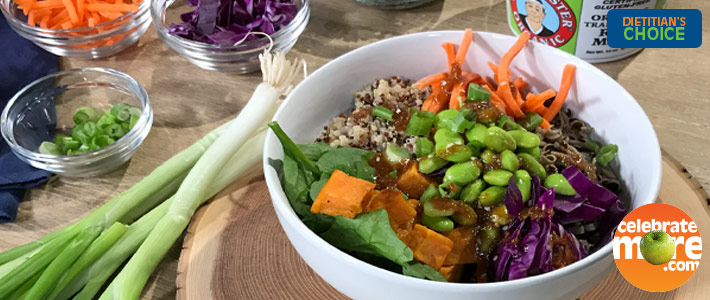
Minnesota Wild Rice Power Bowl with Miso Lime Dressing
We’re serving up an easy and delicious plant-based power bowl that uses local ingredients and is good for your gut!! This recipe is perfect for a busy weeknight and can be easily made ahead of time to pack for lunches throughout the work-week.
Plant Based or Plant-Based Junk Food?
 Plant Based or Plant-Based Junk Food?
Plant Based or Plant-Based Junk Food?
It’s no news that plant-based diets are gaining popularity, but what does plant-based mean? To some it may mean going vegan, while others say it’s being vegetarian, while still others may describe it as incorporating more plant foods into their daily eating patterns. Regardless of how it’s described, as a Registered Dietitian, I love to see more and more people turning to plants! From fruits and veggies, to whole grains, nuts and seeds, plants are all important to have in a balanced diet.
With the popularity of plant-based foods, this trend is here to stay. However, just as with other trends, food companies thrive on using marketing techniques to entice shoppers to buy their products. The animal protein alternative category has exploded with products designed to replace or imitate traditional meat and dairy products, which include plant-based milk, tempeh, tofu, bean burgers, as well as, plant-based sausages, deli meats, crumbles, nuggets, and steaks.1 While the traditional meat and dairy alterative category grows, it’s important to learn how to navigate the Nutrition Facts Label to determine if these alternatives are plant-based protein or plant-based junk food.
How to navigate the Nutrition Facts Label:
-
Saturated Fat:
While one would think that switching to a plant-based meat alternative would result in lower saturated fat, the reality is that many meat alternatives, especially hamburger imitators, have comparable amounts. Our team suggests looking for options that have less than 4 grams of saturated fat per serving—or just look for the ‘Dietitian’s Choice’ logo!
-
Sodium:
This part of plant-based meat alternatives is often left off front-of-package labeling. The amount of sodium in these products can vary considerably from product to product and brand to brand, however, it is important that consumers check this part of the Nutrition Facts Label. With some brands reaching up to 700 mg of sodium or more for imitation meat, shoppers can look for lower sodium options such as black bean burgers or even adding spinach to your burger patties next time you grill out at home. If you are purchasing packaged meat alternatives our team suggests looking for options that have less than 450 mg of sodium per serving—or just look for the ‘Dietitian’s Choice’ logo!
-
Protein:
Plant-based products must have comparable protein, right? Not all animal alternatives are created equal when it comes to protein. For example, soymilk has 7 grams of protein per cup compared with almond milk which only has 1 gram. If you are purchasing a milk-alternative for protein, we suggest looking for a product with at least 6 grams of protein per serving. If you are purchasing a meat-alternative, we suggest looking for the ‘Dietitian’s Choice’ logo on the shelf-tag.
The plant-based protein category is ever evolving. While these foods can fit into a balanced diet, it is important that shoppers recognize that just because a product is labeled ‘plant-based,’ it doesn’t necessarily mean it’s more nutritious! Use the tips above to help you find plant-based foods that fit into your lifestyle! And don’t forget—fruits and veggies are plant based, too! #HaveAPlant
Happy & healthy eating!
Emily, MFCS, RD, LD
1. Schroeder, B. (2019, June 18). Plant based food products started with milk, now taking on meat, what’s next? Retrieved from https://www.forbes.com/sites/bernhardschroeder/2019/06/18/plant-based-food-products-started-with-milk-now-taking-on-meat-whats-next/#6b4f2a2821da
2. Olayanju, J. (2019, July 30). Plant-based meat alternatives: perspectives on consumer demands and future directions. Retrieved from https://www.forbes.com/sites/juliabolayanju/2019/07/30/plant-based-meat-alternatives-perspectives-on-consumer-demands-and-future-directions/#7a510e266daa
3. Gelsomin, E. (2019, August 8). Impossible and Beyond: How healthy are these meatless burgers? Retrieved from https://www.health.harvard.edu/blog/impossible-and-beyond-how-healthy-are-these-meatless-burgers-2019081517448
The Importance of Fruits and Vegetables for Preventing and Managing Diabetes
 November is National Diabetes Month and between our Registered Dietitians and our team of Pharmacists we have just the resources you need to help prevent and manage diabetes.
November is National Diabetes Month and between our Registered Dietitians and our team of Pharmacists we have just the resources you need to help prevent and manage diabetes.
Preventing Diabetes with Fruits and Vegetables
A well-balanced plate full of great nutrition includes fruits and vegetables which provide fiber, vitamins, and minerals. One way to help prevent diabetes is to be sure ½ your plate is full of fruits and vegetables. Remember, all forms of fruits and vegetables can be great choices. Here are a few tips:
- FRESH: All fresh fruits and vegetables are great options. Be sure to get a variety!
- FROZEN: Choose frozen fruit with no added sugar and frozen vegetables with no added sodium
- CANNED: Choose canned fruit in 100% juice and canned vegetables with no salt added. For canned vegetables and beans drain and rinse them for 2 minutes to remove additional sodium.
- DRIED: Choose dried fruit with no sugar added
Managing Diabetes with Fruit and Vegetables
Individuals who are on a diabetic friendly diet should focus balanced carbohydrates. Yes, fruit and some vegetables contain carbohydrates, however they still contain fiber, and plenty of vitamins and minerals. We still need carbohydrates- but the type and the amount are very important. Be sure to talk with your doctor or registered dietitian regarding how many carbohydrates you should have at each meal and snack.
Once you have additional guidance from your doctor or dietitian regarding how to balance carbohydrates at each meal and snack, be sure to check out all our great resources from our team of Registered Dietitians! Our resources can all be found at Celebratemore.com/dietitians and click on Resources.
For questions regarding your medication, ask your pharmacist! Together with the correct medication and a carbohydrate-balanced diet you can be in full control of your diabetes.
For questions, please ASK A DIETITIAN
Wishing you a happy and healthy holiday season,
Amy, RD, LD
Apple Quinoa Salad with Roasted Butternut Squash
Fall Apple Walnut Salad
Simple Greek Veggie Salad
Have A Plant™ in the Shape of Fruits and Vegetables
Have A Plant™ in the Shape of Fruits and Vegetables
What’s the biggest trend hitting school lunch boxes this school year? Plant-forward options, encouraging kids to fill up on the beautiful colors, amazing flavors, and new food adventures the plant world has to offer.
 Fruits and vegetables are claiming their rightful place at the foundation of plant-forward eating habits. During August, the Coborn’s Dietitian Team is encouraging all kids and families to Have A Plant™ – in the shape of more fruits and vegetables – to enjoy the beneficial role they play in a happier, healthier lifestyle. That’s right, according to the Produce for Better Health Foundation, market research suggests eating fruit and veggies every day of the week can help improve happiness, life satisfaction and emotional wellbeing.1,2
Fruits and vegetables are claiming their rightful place at the foundation of plant-forward eating habits. During August, the Coborn’s Dietitian Team is encouraging all kids and families to Have A Plant™ – in the shape of more fruits and vegetables – to enjoy the beneficial role they play in a happier, healthier lifestyle. That’s right, according to the Produce for Better Health Foundation, market research suggests eating fruit and veggies every day of the week can help improve happiness, life satisfaction and emotional wellbeing.1,2
Here are some tips to help the kids in your life Have A Plant™, in the shape of fruits and vegetables:
- Pick a Color Theme. Kids love a color scheme and silliness is sure to ensue when kids open a Go Green lunch box filled with green veggies (think cucumber spears, asparagus, broccoli, celery) and our Tasty Tofu Spinach Dip. Include green napkins and silverware to extend the theme.
- Add Unfamiliar to Familiar. Kids are more likely to try a new food item, including a fruit or vegetable, when used in a meal they love or with other foods that are their favorites. Add zucchini noodles to a pasta dish, sliced radishes, kale or mango to tacos, or arugula, mushrooms or bell peppers to pizza.
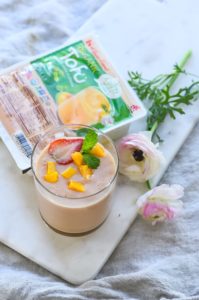 Revamp a Favorite. Smoothies are a go-to for mornings on the run or after school snacks. Increase the amount of fruits and vegetables included and pair with other nutrient-dense ingredients for a high-powered, smile encouraging option. Our Strawberry Papaya Smoothie includes three fruits plus tofu – a plant-based food that adds creaminess and takes on the flavors of foods with which it’s paired.
Revamp a Favorite. Smoothies are a go-to for mornings on the run or after school snacks. Increase the amount of fruits and vegetables included and pair with other nutrient-dense ingredients for a high-powered, smile encouraging option. Our Strawberry Papaya Smoothie includes three fruits plus tofu – a plant-based food that adds creaminess and takes on the flavors of foods with which it’s paired.- Create Pairings. Most often we eat foods in combination, and pairing produce with other nutrient-dense foods can balance flavor, texture and nutrition. In our featured recipes, tofu – another plant-forward food – is the pairing. When used in dips, tofu’s creaminess balances the crunch of vegetables. In our smoothie, tofu adds plant protein to fruits’ vitamins and fiber. Pairing with other nutrient-dense foods – as we’ve done in these recipes – can be an effective way to work towards the goal of eating fruit and vegetables at least one more day each week and increasing happiness.
For more plant-forward recipes and information on tofu, visit House Foods Website.
From us and our friends at Produce For Better Health, happy and healthy eating!
Coborn’s Dietitian Team
Tasty Tofu Spinach Dip
Recipe from House Foods
Strawberry Papaya Smoothie
Cauliflower Has Some Competition!
I don’t know about you, but I see literally everything these days made from cauliflower including crackers, wings – yes even wings, gnocchi, tots, pizza crust and of course the riced cauliflower. You name it, I’m sure it exists. This trend has been around for a while, and we still get many questions about it as more of these plant-based products make their way to grocery store shelves.
It was initially started by the low carb movement as a way to reduce carbs (i.e. instead of rice choose riced cauliflower to go from carbs to no carbs). As a dietitian, I LOVE the fact that we are adding another veggie to the plate in so many creative and fun ways! I mean turning cauliflower into wings – that’s pretty amazing. The flavors are quite impressive, too. However, I do want to course correct and be sure we are all on the same page that carbs are GOOD for us and that we do need carbs at every meal, including those of us with diabetes and those trying to lose weight. It truly is the number way that our body prefers to get energy and its most efficient for our bodies. The problem is when we are getting too many carbs and when we are choosing simple carbs as opposed to complex carbs (i.e. whole grains, fruits, starchy veggies, milk and yogurt).
I tell clients that if they want to take part in enjoying all things with cauliflower, that’s great. I will definitely be cheering you on as you add another veggie to the plate, especially one that wasn’t especially desired prior to this trend. I love this rebirth of cauliflower, BUT please ensure that you are still getting carbs at that meal and of course those whole grains that are rich in iron, fiber, B vitamins and offering protein. What does this look like on the plate you ask?
When doing riced cauliflower, I would recommend doing half riced cauliflower half whole grain brown rice or quinoa. And then still half you plate being fruits and more veggies with of course your serving of protein and dairy as illustrated on MyPlate. Or if you are doing mashed cauliflower instead of mashed potatoes (which are still very healthy; it matters about the portion and what you are adding to them that makes all the difference) again you could do half mashed potatoes, half cauliflower or the mashed cauliflower, but add a slice of whole grain bread to the meal. This way you are still getting in whole grains and complex carbs during your meals 😊
Finally, just because something is made with cauliflower doesn’t mean it is always healthier, it can have added sugar, added sodium and lots of fat for it to taste good. For example, mashed cauliflower with all the bacon and cheese- we all know its tastes amazing, however, keep in mind “everything in moderation,” 😉 It’s best to always check the shelf tag for that ‘Dietitian’s Choice’ label indicating that it is a better for you option.
Cheers to making veggies cool and fun!!! Who knows what the next vegetable trend will be, perhaps cabbage? Who knows! More and more we are seeing consumer interest move towards more plant-based foods, bolder flavors, and overall healthy eating and gut-health are top of mind. Always remember that as trends change and new eating patterns appear in the media, ask our team of Registered Dietitians to give you the science-based research to help you know what truly is best for you and your personal health. You can count on us to keep you updated and well informed!!
Peace and Wellness,
Ashley
Fresh Summer Quinoa Salad
Spinach and Cottage Cheese Stuffed Shells
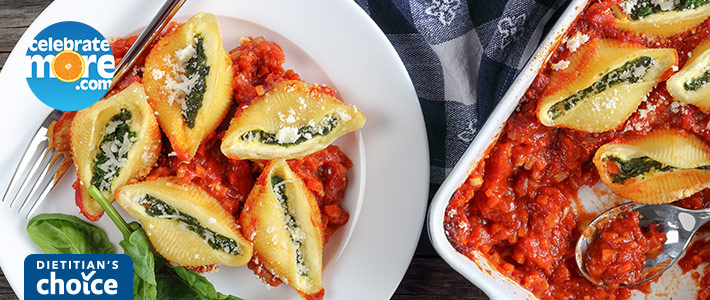
Spinach and Cottage Cheese Stuffed Shells
Jump on the bandwagon and reap the nutritional benefits of Cottage Cheese with this Spinach and Cottage Cheese Stuffed Shells recipe! Our dietitians are adding new recipes all the time, so check out our Dietitians Choice Recipes page for all their latest recipes!
Shop from the comfort of your home! You can shop online at any of our proud family of stores for these recipe ingredients as well as the rest of your grocery list! We offer curbside pick up at all locations and delivery in select locations as well. Don’t forget to connect your MORE Rewards account when you shop online for extra savings, digital coupons, and many other rewards too!
Shop Ingredients
Buttermilk Green Goddess Dressing
Spring Into Summer With Smoothie Bowls
Spring Into Summer with Smoothie Bowls
 Like to eat? Me too! While smoothies are a quick and easy way to get in great nutrition, I’ve always had one personal problem with them – I’d rather eat my food than drink it. Then entered the smoothie bowl. Tasty, nutritious and Instagram worthy? Hellooooo #BowlGoals. While making a smoothie bowl is quite straight forward, I am sharing my top 5 tips for getting the most nutrition (and taste) out of your next creation.
Like to eat? Me too! While smoothies are a quick and easy way to get in great nutrition, I’ve always had one personal problem with them – I’d rather eat my food than drink it. Then entered the smoothie bowl. Tasty, nutritious and Instagram worthy? Hellooooo #BowlGoals. While making a smoothie bowl is quite straight forward, I am sharing my top 5 tips for getting the most nutrition (and taste) out of your next creation.
-
Start with a nutritious (and tasty) base
- When making a balanced smoothie bowl (or any meal or snack for that matter), it is important to include a protein, carbohydrate and healthy fat.
- For this tip, let’s focus on protein. While there are many ways to incorporate protein into a smoothie bowl, one of the best ways I recommend is to use a protein-rich base like:
- Kefir
- Milk or lactose-free milk
- Soy milk
- Greek yogurt
- Skyr-style yogurt
- Not only do these options provide protein, they also contain other nutrients like calcium, vitamin D and probiotics!
-
All the fruits and veggies
- Next up, let’s chat about carbohydrates. Carbohydrates, especially fruits and veggies, are an important part of what we eat.
- According to the CDC, 76% of Americans are not consuming the recommended 1.5-2 cups of fruit per day and 87% are not meeting the 2-3 cups of veggies recommended per day.1 This means there is plenty of room in our smoothie bowls for fruits and veggies!
- Fruits
- One of my favorite tips is to add frozen fruit! This allows for a thicker and creamier texture – perfect for eating by the spoonful.
- Frozen, fresh and canned fruit (in 100% fruit juice) are great ways to add flavor, color and variety.
- My personal favorites are using in-season fresh fruit (bananas are always a great option), frozen berries or cherries and canned pineapple!
- Veggies
- Long gone are the days where you must have a brown smoothie bowl in order to get your veggies!
- Although greens (like spinach and kale) are great additions to smoothies, milder tasting veggies such as cooked cauliflower or sweet potato can add variety in texture and nutrition.
- Don’t forget about no-salt added canned beans! White northern beans and chickpeas also add great variety and are an inexpensive addition to your smoothie bowl.
-
Add in your healthy fats
- Healthy fats are often forgotten when blending up a smoothie bowl, however, they can add in key nutrients such as fiber, healthy monounsaturated fats and omega-3s!
- Try adding one of these the next time you create your own concoction:
- Avocado
- Nut or seed butter
- Flax oil
- Avocado oil
- Hemp seed
- Chia seed
- Ground flax seed
-
Blend it up
- This may sound like a simple step, but I wanted to include this tip with a few helpful hints.
- If using greens, blend the base and greens first before adding in other ingredients. This will ensure that greens are well blended. Although I said I like to ‘eat’ my food, I’m not a fan of leaves of spinach sticking out of my smoothie bowl.
- If you are not going to eat your smoothie bowl right away (aka meal prepping), be warned that you shouldn’t mix dairy and pineapple together. Pineapple naturally contains the enzyme bromelain, which when mixed with dairy and left to sit, the dairy will curdle.
-
Don’t forget the toppings
- After you have your tasty, nutritious and blended creation, the fun part starts.
- Pour your smoothie mix into your favorite bowl and top with tasty toppings!
- You can choose toppings based on flavor or design, but either way, have fun with it! Here are some of my favorite suggestions:
- Nuts and seeds
- Hemp, chia, and flax seeds
- Nut and seed butters
- Fruit slices
- Edible flowers
- 100% dried fruit
- Cacao nibs
- Granola
 To help start you off right, try one of my personal favorite smoothie bowl recipes – Blueberry, Avocado, and Banana Smoothie Bowl!
To help start you off right, try one of my personal favorite smoothie bowl recipes – Blueberry, Avocado, and Banana Smoothie Bowl!
Healthy and Happy Eating,
Emily Parent, RD, LD
-
(2015, July 10). Adults meeting fruit and vegetable intake recommendations — United States, 2013. Retrieved from www.cdc.gov/mmwr/preview/mmwrhtml/mm6426a1.htm
More Videos
Page
©
2025 Coborn's Inc. and Vimax Media unless otherwise noted. All rights reserved.




